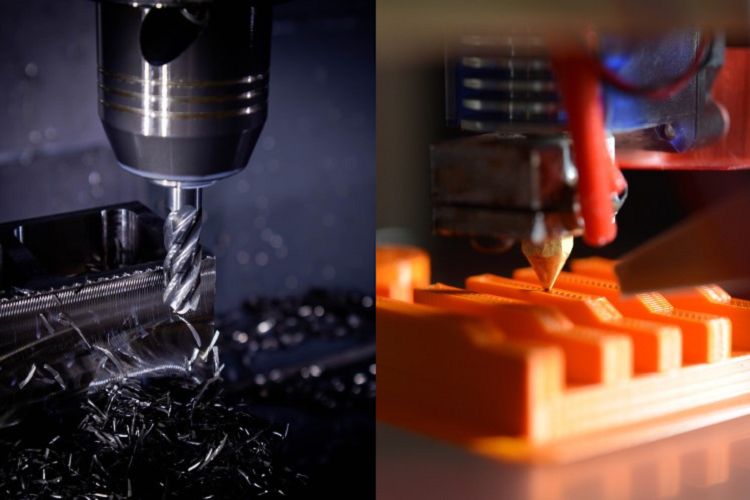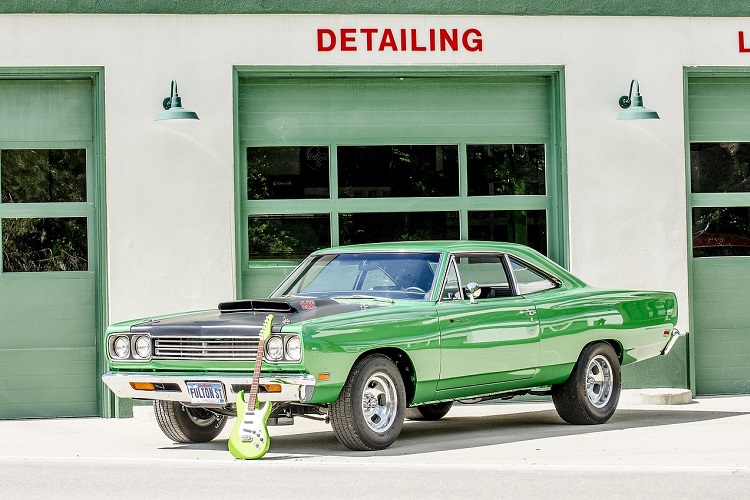Rapid prototyping has become one of the pivotal activities of modern manufacturing. For saving costs, innovating better, and delivering high-quality products, prototyping plays a vital role. There are two primary technologies for performing robust prototyping — 3d printing and CNC machining.
Additive manufacturing is overgrowing with several advantages over traditional processes. However, it has challenges when it comes to mass manufacturing. On the other hand, CNC is an ideal process for bulk production, but it’s expensive for small-batch prototyping. Both the technologies have their fair share of pros and cons that businesses need to pick one per their bespoke requirements.
If you are new to prototyping and confused between 3d printing vs CNC machining, then we’ve got you covered. On this note, we will deep dive into both methods and explore which one is ideal for your business.
What is 3D Printing?
3D printing is an additive method where layers of materials are fused to create objects. Also known as additive manufacturing, it has gained ground during the past few decades due to its ability to print any shape with high complexity at affordable rates.
3D printers heat thermoplastic filament and lay it down in layers according to a blueprint, which results in the manufacturing of the desired product. There are three major technologies for 3d printing— Fused deposition modelling (FDM), Selective laser sintering (SLS), Stereolithography (SLA). Among these, FDM is being widely used because it’s the cheapest and fastest.
Despite certain limitations, 3d printing has become a rage in the prototyping space due to its cost-effectiveness and ease of use. Also, with the increasing demand across various industry verticals, the technology has catapulted itself to a pivotal position in this domain. Furthermore, compared to CNC, 3d printing is much more efficient for rapid prototyping.
What is CNC Machining?
CNC stands for computer numerical control, and CNC machines are automated. The machine moves precisely in a pre-programmed fashion to cut or shape materials with high accuracy. During the 1950s, most of the prototyping was done with fixed tools and manually loaded workpieces. However, as computing became faster, CNC took over the industry to produce complex geometries automatically.
There are two major types of CNC machines: Manual and Computerized. The manual one requires human intervention throughout the process, while the latter comprises an automatic tool changer that helps you complete several tasks within a short time.
CNC technology is a good choice for mass production — the only drawback being high cost. On the other hand, it’s not suitable for rapid prototyping because of its slow throughput and expensive tooling. However, with rapid advancements in robotics and automation, CNC has found new applications in custom manufacturing.
3D Printing vs CNC Machining
Both these manufacturing technologies are robust, efficient, and highly agile when drafting ideas into reality. For picking up the right one, let’s understand different between 3D printing vs CNC Machining.
Range of Applications
3d printing is widely used for prototyping and small-batch production. It’s easy to use and speeds up the entire process, thereby saving both time and money for the customer. Moreover, it has opened up new opportunities such as multi-material printing — a feature that brings better accuracy along with several other positives.
On the contrary, CNC has stringent limits and is mainly used for the mass production of parts. It can’t produce highly complex geometries as accurately as 3d printing does. It is a factor that makes 3d printing more popular across business sectors, including automotive.
Material Options
Both 3d printing and CNC offer freedom when it comes to designing products. However, 3d printers can work with various materials, including rubber, metal, plastic, paper, ceramic etc. On the other hand, CNC machines are restricted to fixed material options for prototyping. The only scope for customization is in the manufacturing of large parts. In addition, 3d printing is better for making moulds that are used for mass production.
Speed
3d printing offers swift prototyping because of its faster build speed. Moreover, numerous software solutions work with 3d printers and help you get a working prototype within a short time. On the contrary, CNC machining requires manual work and machine time to produce a product. So, it’s not a time-efficient option for the prototyping industry.
The Complexity of Geometry
A 3d printer can produce products with high complexity because it builds the physical model by adding layers of molten plastic. It means you can create complex geometries easily even though you aren’t an expert. With CNC, you need to set up each geometric feature manually, which takes time and effort.
3d printing is a preferred option for low volume, high complexity projects that require quick turnaround times. On the other hand, CNC is suitable for mass production because it’s highly productive and offers precision at a lower cost.
Accuracy
For a prototype, accuracy is a crucial factor. For prototyping, 3d printers are accurate and fast, especially for fine details and intricate geometries. In comparison to CNC machines, 3d printers produce prototypes with excellent surface finish and tight tolerances. However, CNC machining offers versatility in material selection and is thus widely used for volume production.
3d Models and Software
3d printers are highly dependent on CAD software for producing accurate prototypes. Moreover, the machine must have an inbuilt slicer to create layers and refine designs during the prototyping process. These two factors make 3d printing a complex technology that is difficult to master compared to CNC machining.
CNC is a good choice for experienced machine operators who are well-versed with CAD files and CAM software. The machine has a controller that handles the process from start to finish. It reaches the programmed coordinates and produces parts based on algorithms, thereby helping you save time and money on training and hiring technical staff.
Can 3D Printing Technologies Replace CNC in the Future?
The growth of 3D printing has been on a steady rise since its birth. There is no doubt that it is changing the face of manufacturing as we know it today. However, what many business owners do not understand is how these two technologies compare against each other. For decades, CNC has remained the most popular subtractive manufacturing method for industries. However, as with growing advancements, 3d printing technology is also becoming more mature and offering a wide range of use cases. So, can it replace CNC machines in the future?
To clear this confusion, one must first understand the prominent differences between 3d printing vs CNC machining. At present, 3d printers are expensive and have a small build size. Therefore, they are best suited for producing prototypes that help engineers & designers perfect their ideas before mass production. On the other hand, CNC routers are affordable and have a large build area that allows you to fabricate parts quickly during prototyping.
So, will 3D printing technologies replace CNC milling machines anytime soon? The answer is — It will take time. IT is because additive manufacturing has its own set of limitations when compared to subtractive manufacturing methods. However, with machine prices dropping rapidly on account of several advancements, there’s no doubt about the fact that its applications are going to expand considerably soon. No matter what, 3d printing & CNC machining are complementary processes for prototyping and tooling.
When to Use CNC Technology?
In the manufacturing industry, CNC machines are used for mass production. CNC is among the most used manufacturing processes because of its speed & efficiency. Moreover, CNC is ideal to use when you require volume production of identical parts on high-end machines. It is because it offers maximum productivity, accuracy and consistency with every piece.
CNC machining is also ideal for fabricating moulds and dies since they require high accuracy and surface finish. Moreover, it is widely used for the mass production of tools & fixtures that are repeatedly used in manufacturing processes. On the other hand, CNC machining is not suitable when you require low-volume parts or prototypes like 3d printing. If you plan to set up in-house bulk manufacturing, then CNC is an ideal option.
When to Use 3d Printing?
3D printing is best suited for prototyping & low-volume manufacturing. In addition, it’s suitable for producing parts that have intricate details. The most significant advantage of 3D printers is creating unique and complex components that are difficult to make with conventional processes like CNC machining.
For instance, it can print geometrically complex geometry without any need for post-processing operations like sanding and drilling. It makes them a great choice if high accuracy or surface finish is not required as post-processing. If you need to produce multiple iterations of a design idea, then 3d printing is ideal. This technology does not take a lot of time, and you can continue testing further iterations without wasting much time & resources.
Wrapping Up
Both 3d printing and CNC machining are robust technologies. But when you look only from a rapid prototyping perspective, then 3d printing is a more efficient technology. It offers excellent surface finish, fast build speed and several other benefits that make it highly productive. On the contrary, CNC machining is widely used for mass production because of its versatility in terms of material selection.
Ash Magoo is a Project Manager at KARV Automation. KARV Automation is offering on-demand global manufacturing solutions including 3d printing, 3d scanning, CNC machining, Augmented reality, injection molding, and more to help businesses grow faster.




